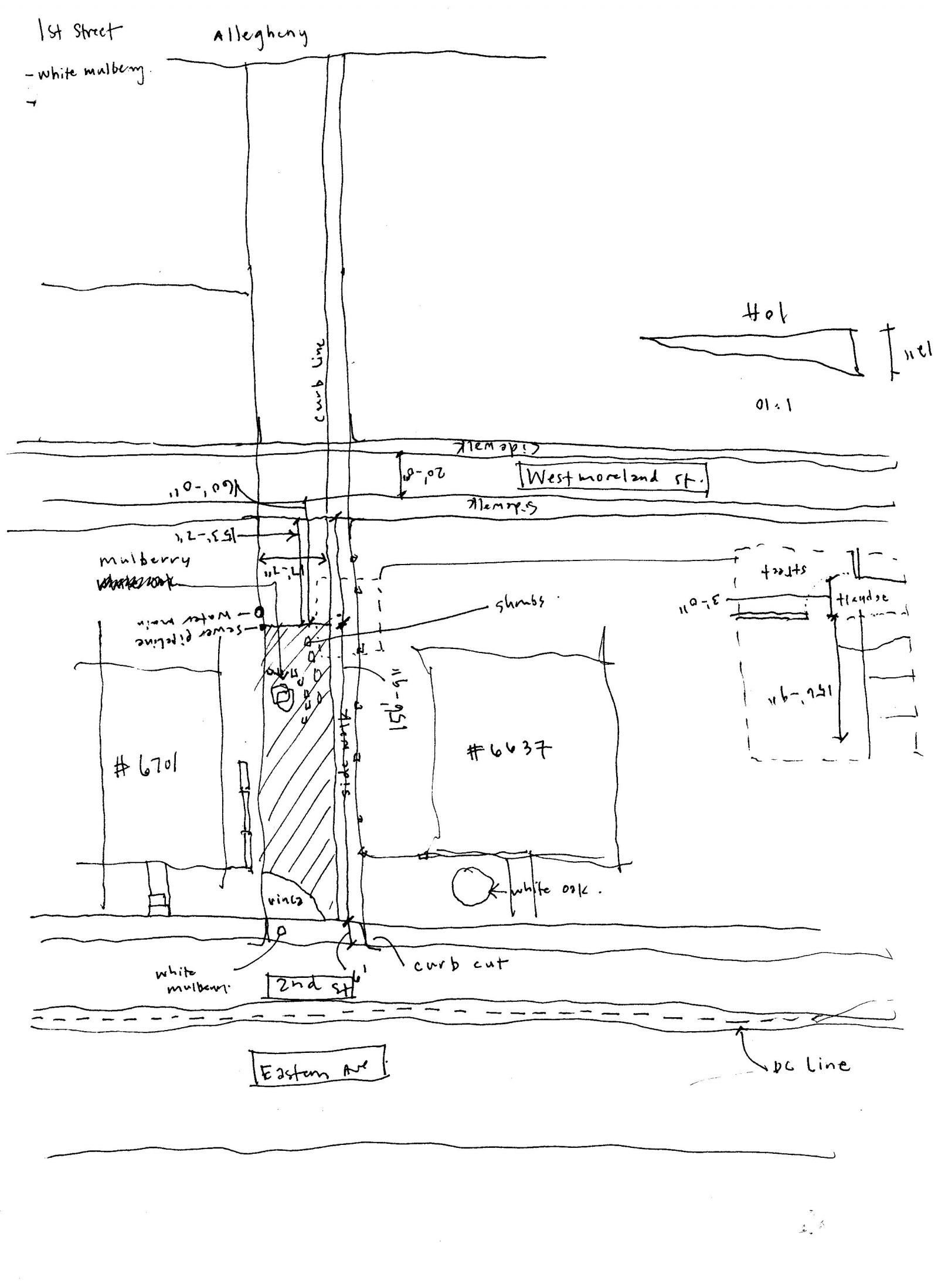They are spaces you pass every day. They may present as an overgrown lot or a well-worn “shortcut” between fenced neighborhoods. They are city property but disappear into the built environment around them. They are known in the industry lexicon as “paper streets”: streets within a community that were drawn up on paper, but never materialized terrestrially. Paper streets exist in virtually every American community today. Because they are not paved—and often are not even defined as public space—they can create a host of problems for communities, inviting crime, overgrowth or even claimed as additional property by nearby homeowners.
This summer, Assistant Professor of Architecture Jana VanderGoot began a collaboration with Assistant Professor of Landscape Architecture Kelly Cook to uncover these phantom streetscapes for the community of Takoma Park, Maryland. The project, funded by an ADVANCE grant from the University of Maryland, will uncover the community’s paper streets, explore both their historic roots and contemporary implications and shape their future through inventive design.
Working with the planning department of Takoma Park, VanderGoot and Cook spent the past several months completing a field survey of the city’s Paper Streets, using county and city archives, maps and on-foot field surveys. They quickly discovered many reasons that these streets were not built, which helped them develop taxonomy. Some were too close to the city’s prime water source—Takoma Spring—where a street could introduce erosion problems. Others were placed in areas that were too steep; Takoma Park is situated in an area of fluctuating elevation. Still others were overtaken by a busier street and simply never materialized.
Armed with research competed this fall, the team will embark on phase two: developing a cohesive, holistic design plan for the city as well as specific ideas to guide the fate of their Paper Streets. Essential in these plans are low-maintenance amenities that promote use and safety, like lighting and covered seating. One scheme investigates creating a trail system by connecting the lots, an idea that would fit well with the area’s active culture.
“Although these spaces aren’t obvious public spaces, they have the potential to be wonderful community assets,” explains VanderGoot. “The idea is to create a kit-of-parts that offers a continuous regime of low-maintenance materials to transform these spaces into manageable amenities for the city.”
There is little in the way of research on this country’s Paper Streets. VanderGoot and Cook plan to use this project to design a framework for communities and planners across the U.S. who are interested in the development and engagement of their own paper streets.
“We found some literature on Paper Streets, but it’s not a widely-researched topic,” said VanderGoot. “No designers are looking at this saying, ‘this is a design challenge.’ Yet the streets impact communities in many ways.”
VanderGoot and Cook plan to publish their Takoma Park study early next year, with the hope that it will lead to investigating Paper Streets in other parts of the country.

